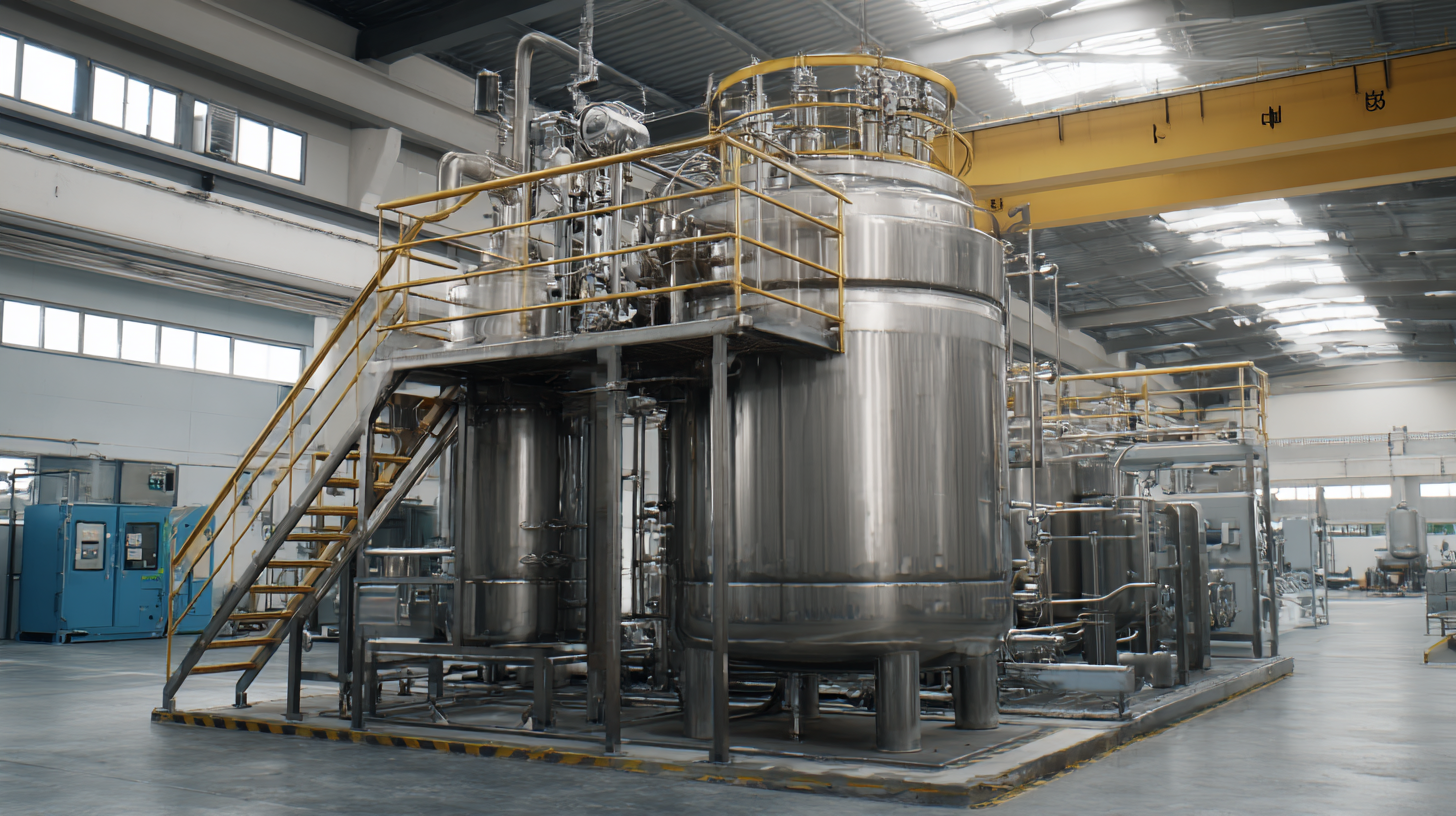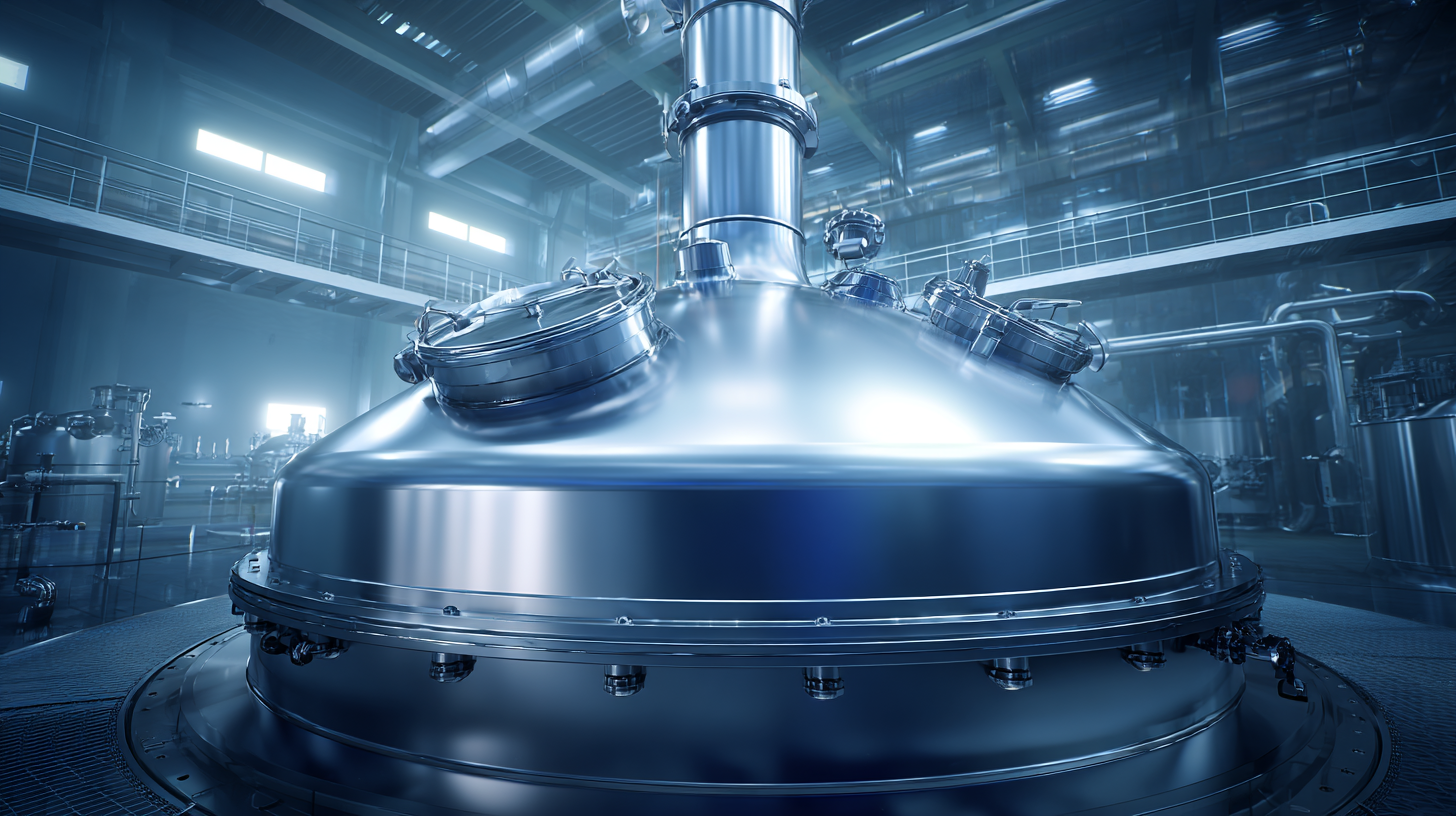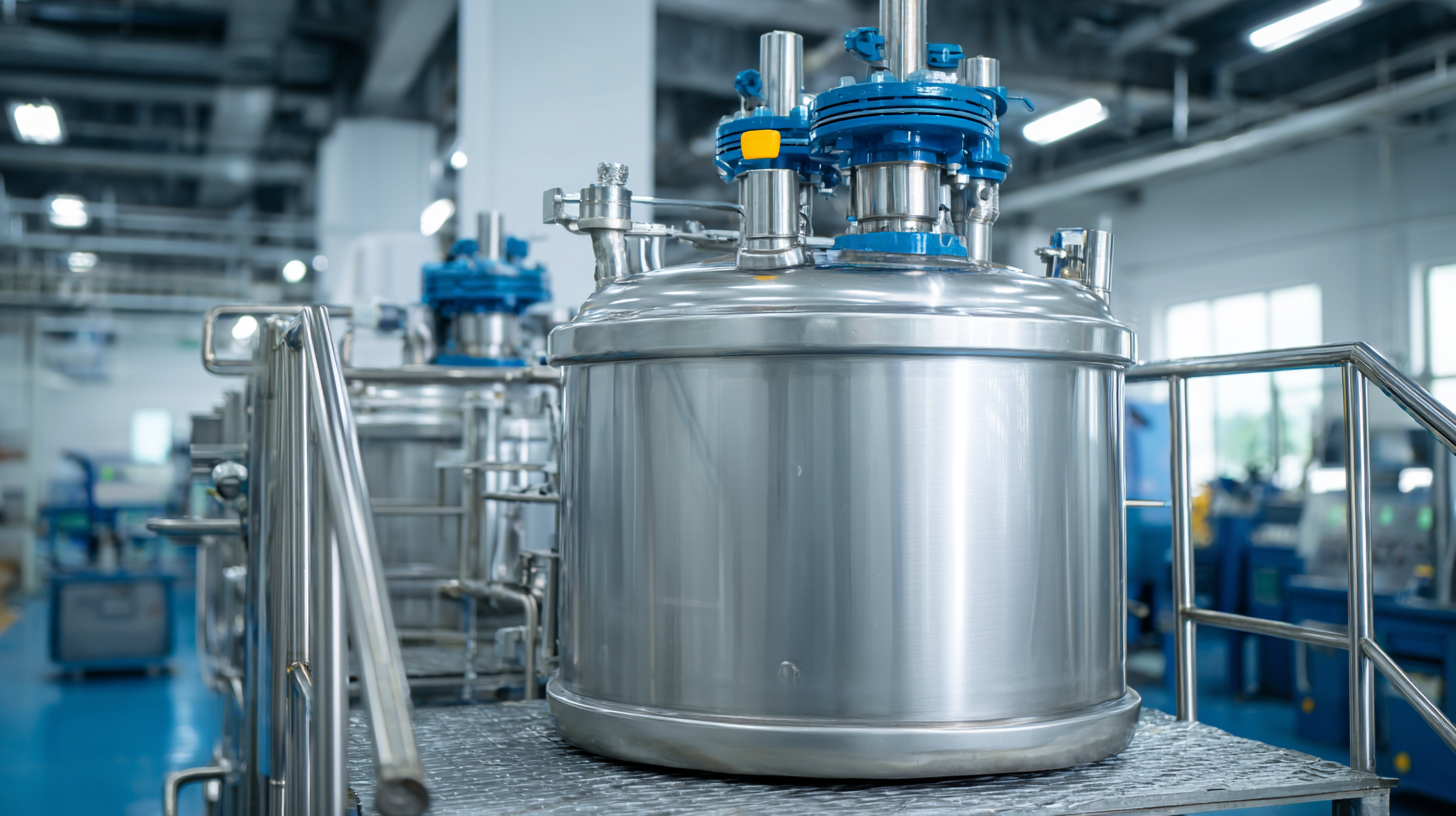
As we step into 2025, the landscape of mixing technology is evolving rapidly, driven by advancements in digital innovation and automation. The Agitator Mixing Tank, a staple in various industries, plays a crucial role in this transformation. These tanks are not just about combining materials; they represent a convergence of efficiency, precision, and sustainability.

In this blog, we will explore the latest trends and technological advancements that are set to redefine the use of Agitator Mixing Tanks. We will delve into best practices, expert tips, and cutting-edge solutions that can enhance mixing processes, ensuring businesses remain competitive in an ever-changing market.
Join us as we navigate the future of mixing technology, empowering you with insights that will help optimize your operations and harness the full potential of your Agitator Mixing Tank in 2025 and beyond.
As we approach 2025, the landscape of agitator mixing tank technology is set to undergo significant transformations driven by innovation and efficiency. One of the key advancements is the integration of smart technology, including IoT capabilities that allow for real-time monitoring and data analytics. This offers operators precise control over mixing parameters, ensuring optimal performance and minimizing waste. Enhanced automation features are also emerging, enabling advanced algorithms to adjust processes automatically, thereby increasing productivity and reducing human error.
Another noteworthy innovation is the development of advanced materials for mixing tanks. New composites and coatings are designed to withstand corrosion and high temperatures, extending the equipment's lifespan and reliability. Additionally, energy-efficient designs are becoming more prevalent, utilizing powerful yet low-energy motors that decrease operational costs while maintaining mixing effectiveness. As these technologies converge, businesses will not only benefit from enhanced mixing capabilities but also from sustainable and cost-effective solutions that align with the growing demand for eco-friendly practices in manufacturing.
In the rapidly evolving landscape of mixing technology, the integration of automation and the Internet of Things (IoT) will play a pivotal role in enhancing mixing efficiency by 2025. Automation streamlines processes, reducing the likelihood of human error and ensuring a consistent quality of the mixed products. With automated agitator mixing tanks equipped with smart sensors, operators can monitor and adjust the mixing parameters in real time, leading to optimized performance and reduced downtime.
Tip: Implementing IoT devices can provide critical data analytics that helps in understanding the mixing process better. By leveraging this data, businesses can make informed decisions to improve not only the efficiency of their operations but also the quality of their output.
As the industry moves toward more sophisticated technologies, companies that embrace IoT-enabled systems will gain a competitive edge. These systems can facilitate predictive maintenance, alerting operators of potential issues before they lead to costly breakdowns. This proactive approach ensures that mixing processes remain uninterrupted, maximizing throughput and profitability.
Tip: Regularly update your software and IoT devices to ensure compatibility with new technologies. Staying ahead of updates will allow you to incorporate the latest features and enhancements that improve mixing efficiency and safety.

As the demand for eco-friendly solutions continues to rise, the mattress industry is also embracing sustainable practices. The growing awareness of environmental issues has motivated manufacturers to explore innovative materials and production methods that minimize their ecological footprint. Memory foam mattresses, Bonnell springs, latex, and hybrid models are increasingly being designed with sustainable materials, such as organic cotton, natural latex, and recycled components. This shift not only meets consumer preferences but also aligns with global sustainability goals.
Interest in sustainable mattresses has been reflected in market growth across various applications, including private households, hotels, and hospitals. Each segment is adopting greener options, driven by the need for comfort without compromising the environment. In particular, eco-friendly hotels are prioritizing sustainable bedding solutions as part of their commitment to reducing energy consumption and waste. This trend suggests a significant shift within the industry, where innovations in mixing technologies and materials are essential to creating durable, sustainable products that enhance both comfort and environmental responsibility. The commitment to an eco-conscious approach is set to redefine the mattress landscape in the coming years, contributing to a healthier planet.
In 2025, the mixing technology landscape will increasingly prioritize customization and versatility to meet the growing demands of various industries. As businesses strive for efficiency and precision in their processes, the adaptability of agitator mixing tanks will play a crucial role. These tanks must not only facilitate diverse mixing tasks but also accommodate specific requirements unique to each application. This trend reflects a broader move towards tailored solutions that enhance operational performance.
Tip: When selecting mixing technology, consider the unique needs of your production line. Evaluate how different agitator designs can optimize your processes for things like viscosity variations and batch sizes.
Furthermore, as we navigate a rapidly evolving market, the fusion of innovative materials and intelligent systems will significantly impact mixing efficiency. Companies are expected to invest in versatile equipment that offers not just excellent mixing capabilities but also the potential for integration with other technologies, such as IoT and data analytics. This synergy will lead to smarter operations and enable businesses to stay competitive.
Tip: Invest in training for your team to ensure they understand the full capabilities of your mixing technology. Proper utilization can drastically improve productivity and reduce waste in your mixing processes.

As we look toward 2025, the mixing technology landscape is poised for significant transformation, particularly in safety and compliance. With the increasing complexity of materials and processes, mixing operations will face heightened scrutiny from regulatory bodies. It is crucial for manufacturers to adopt innovative agitator mixing tanks that not only enhance efficiency but also adhere to stringent safety standards. This includes incorporating features such as advanced sensors and automated controls that monitor parameters in real-time, ensuring compliance while minimizing risks.
Moreover, addressing safety challenges means fostering a culture of continuous improvement within organizations. Employees must be trained on best practices for operating mixing technology and understanding the importance of regulatory compliance. As we advance, the integration of digital tools and data analytics will empower facilities to predict potential safety issues before they arise, creating a more proactive rather than reactive approach. By embracing these technological advancements, industry leaders can navigate future challenges while ensuring both safety and compliance are at the forefront of their mixing operations.
